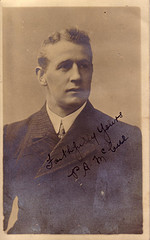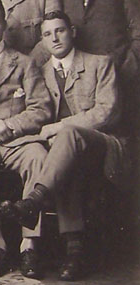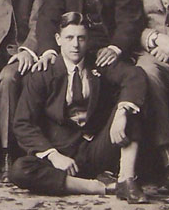Francis Edward Cotton is a former rugby union prop forward who played for England and the British Lions. His clubs included Coventry R.F.C. and Sale. After retiring, he remained in rugby administration and founded a clothing company. In 2007, Cotton returned to his former club Sale as a member of the club's board.
The Old Alleynian Football Club is an open rugby union club founded as a team for the old boys of Dulwich College, themselves known as Old Alleynians. Founded in 1898, it is one of the oldest clubs in London and was the last of London's old boys clubs to become a fully open club. It is notable not only for its longevity, but also for the prominence it once attained on the club circuit and for the number of eminent players that have been members of the club, some of whom gained their international caps whilst at the club.

Gary Ross Freeman is a New Zealand former professional rugby league footballer who played in the 1980s and 1990s, and coached in the 2000s, who both captained and coached the New Zealand national team. He was arguably one of New Zealand's greatest Test halfbacks and at the time of his retirement he was the most-capped New Zealand test player and also held the record for most consecutive tests for New Zealand with 37.

Christopher Hobart McKivat was an Australian rugby union and rugby league player – a dual-code rugby international. He represented the Wallabies in over 20 Tests and tour matches from 1907 to 1909 and the Kangaroos in 5 Tests from 1910 to 1912. He is unique in Australian rugby history as the only man to captain both the national rugby union and rugby league teams. Following his playing career, he became the most successful coach of North Sydney in the club's history.
Philip John Larder MBE, is an English rugby league and rugby union coach, and former player in both codes.

Patrick Aloysius McCue was an Australian representative rugby union player and pioneer rugby league footballer. He was a dual-code rugby international and an Olympic gold medallist.
Viv Farnsworth was an Australian professional rugby league footballer who played in the 1910s and 1920s. He played for Newtown, Wests, New South Wales and Australia, he also represented Australasia. He primarily played as centre and is considered one of the Australia's finest footballers of the 20th century.

Phillip Dudley Waller was an English-born international rugby union forward who played club rugby for Newport and Johannesburg. He won six caps for Wales and also played for the British Isles in their 1910 tour of South Africa.

Rugby union in the Isle of Man is a popular sport. It has no national competitive side of its own, and is not affiliated to the IRB in its own right. For this reason, it has no IRB ranking.

The 1891 British Isles tour to South Africa was the first British Isles rugby union tour of South Africa and only the second overseas tour conducted by a joint British team. Between 9 July and 7 September, the team played 20 games, including three Tests against the South Africa national rugby union team. The British Isles not only won all three Test matches, but also won all 17 provincial games. Although not named as such at the time, the tour is retrospectively recognised as a British Lions tour.
John Hammond was an English rugby union forward who, although not capped for England, was part of three British Lions tours, all to South Africa. He gained three caps during the 1891 tour to South Africa and captained the 1896 tour, winning another two test caps. Although not part of the 1899 tour to Australia, he was made the manager of the 1903 tour. Despite captaining the British Isles, Hammond never represented England.
Edward Bromet was an English rugby union forward who was a member of the first official British Isles team to tour abroad. On the tour he was joined by his brother, William Bromet, who would also play international rugby for England.
Randolph Littleton Aston was an English rugby union centre who played club rugby for Blackheath and Cambridge University and was a member of the first official British Isles tour in 1891.
William Grant Mitchell was an English rugby union fullback who was a member of the first official British Isles team. Mitchell represented several club teams and was an original member of touring team, the Barbarians.
Denys Douglas Dobson was an English international rugby union forward who played club rugby for Oxford University and Newton Abbot. Dobson played international rugby for England and the British Isles team on its 1904 tour of Australia. Dobson was the first player from a British touring rugby team to be dismissed from the playing field, when he was sent off in a match against the Northern District in Newcastle, New South Wales.

John Eric Greenwood was a rugby union international who represented England from 1912 to 1920. He also captained his country. During what would have been the prime of his playing career he fought in the First World War.
Eric Arthur Cleugh, CMG, CVO, OBE was a British diplomat who retired as British Ambassador to Panama. Earlier in his life, he had played for Uruguay in a rugby union international against Argentina, although the game was not one for which test caps were awarded.
Peter Denny Strang was a British sportsman who played rugby union at an international level, touring Argentina with the 1910 Combined British rugby union side, an early incarnation of the British and Irish Lions.







